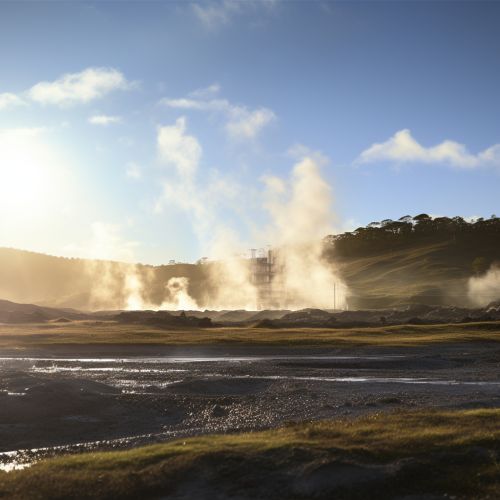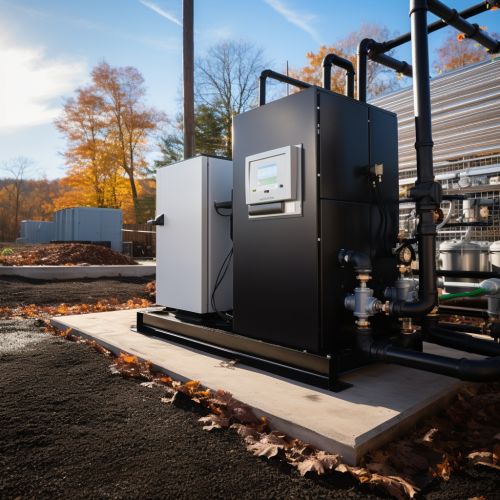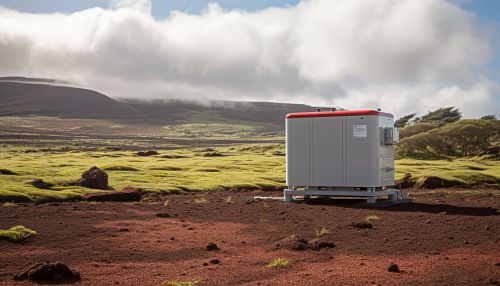Geothermal Energy
Introduction
Geothermal energy is a form of renewable energy derived from the Earth's internal heat. This heat originates from the planet's formation 4.6 billion years ago and from radioactive decay of materials. The geothermal gradient, which is the difference in temperature between the Earth's core and its surface, drives a continuous conduction of thermal energy in the form of heat from the core to the surface. In the Earth's core, temperatures may reach over 5000 degrees Celsius. Heat conducts from the core to surrounding rock, and high temperatures and pressures cause some rock to melt, creating magma convection upward since it is lighter than the solid rock. This magma then heats rock and water in the crust, sometimes up to 370 degrees Celsius.


Geothermal Power
Geothermal power is cost-effective, reliable, sustainable, and environmentally friendly, but has historically been limited to areas near tectonic plate boundaries. Recent technological advances have dramatically expanded the range and size of viable resources, especially for applications such as home heating, opening a potential for widespread exploitation. Geothermal wells release greenhouse gases trapped deep within the earth, but these emissions are much lower per energy unit than those of fossil fuels. As a result, geothermal power has the potential to help mitigate global warming if widely deployed in place of fossil fuels.
Direct Use
In the direct use of geothermal energy, a well is drilled into a geothermal reservoir to provide a steady stream of hot water. A pipe, called a geothermal heat exchanger, is then inserted into the well. The heat exchanger fills with hot water, which can then be used to heat a home or office building. Direct use of geothermal energy in homes and commercial buildings is much less expensive than traditional heating systems and reduces the need for electricity.
Geothermal Heat Pumps
Geothermal heat pumps, also known as ground-source heat pumps, can be used to heat a home in winter, and cool a home in summer. These systems transfer heat by pumping water or a refrigerant through pipes just below the Earth's surface, where the temperature is constant year-round, and then into a home. Geothermal heat pumps are also used in larger commercial buildings, and by schools and universities, hospitals, government buildings, and apartment complexes.


Environmental Impact
The environmental impact of geothermal energy depends on how it is being used. Direct use and heating applications have almost no negative impact on the environment. On the other hand, geothermal power plants have the potential to cause some air pollution. They can release small amounts of sulfur dioxide and silica emissions. Nitrogen oxides and carbon dioxide are also released, but at lower levels than coal and natural gas plants.
Conclusion
Geothermal energy is a sustainable, clean, and environmentally friendly source of energy. It uses the immense heat stored beneath the Earth's surface to generate electricity and heat homes and businesses. While it is not yet widely used, the potential for future use is enormous.
See Also
- Renewable Energy - Sustainable Energy - Energy Conservation
